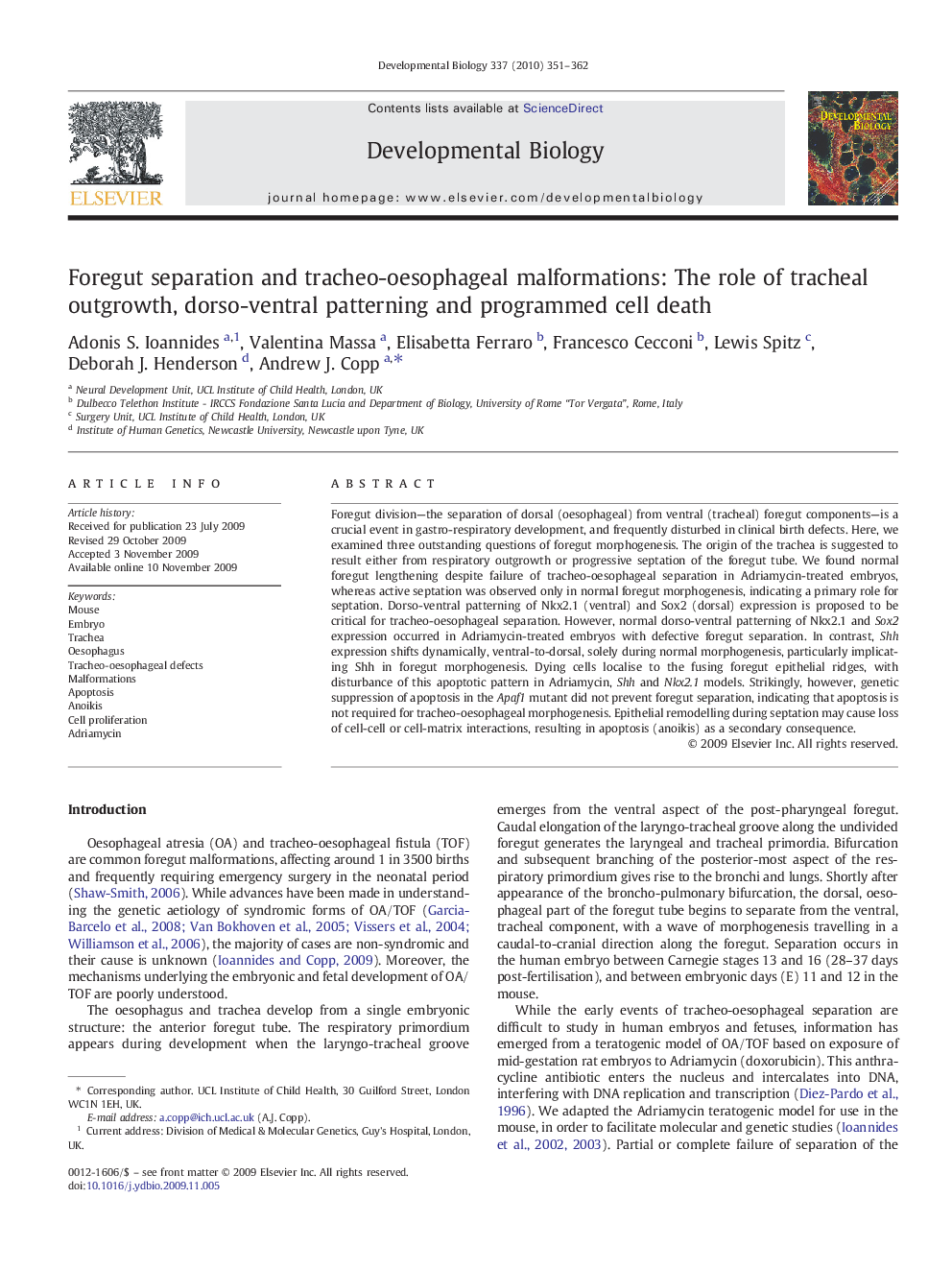| Article ID | Journal | Published Year | Pages | File Type |
|---|---|---|---|---|
| 10933096 | Developmental Biology | 2010 | 12 Pages |
Abstract
Foregut division-the separation of dorsal (oesophageal) from ventral (tracheal) foregut components-is a crucial event in gastro-respiratory development, and frequently disturbed in clinical birth defects. Here, we examined three outstanding questions of foregut morphogenesis. The origin of the trachea is suggested to result either from respiratory outgrowth or progressive septation of the foregut tube. We found normal foregut lengthening despite failure of tracheo-oesophageal separation in Adriamycin-treated embryos, whereas active septation was observed only in normal foregut morphogenesis, indicating a primary role for septation. Dorso-ventral patterning of Nkx2.1 (ventral) and Sox2 (dorsal) expression is proposed to be critical for tracheo-oesophageal separation. However, normal dorso-ventral patterning of Nkx2.1 and Sox2 expression occurred in Adriamycin-treated embryos with defective foregut separation. In contrast, Shh expression shifts dynamically, ventral-to-dorsal, solely during normal morphogenesis, particularly implicating Shh in foregut morphogenesis. Dying cells localise to the fusing foregut epithelial ridges, with disturbance of this apoptotic pattern in Adriamycin, Shh and Nkx2.1 models. Strikingly, however, genetic suppression of apoptosis in the Apaf1 mutant did not prevent foregut separation, indicating that apoptosis is not required for tracheo-oesophageal morphogenesis. Epithelial remodelling during septation may cause loss of cell-cell or cell-matrix interactions, resulting in apoptosis (anoikis) as a secondary consequence.
Related Topics
Life Sciences
Biochemistry, Genetics and Molecular Biology
Cell Biology
Authors
Adonis S. Ioannides, Valentina Massa, Elisabetta Ferraro, Francesco Cecconi, Lewis Spitz, Deborah J. Henderson, Andrew J. Copp,
